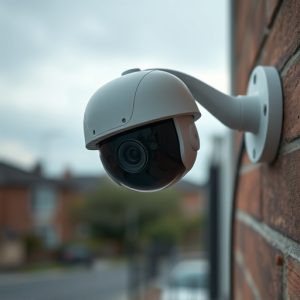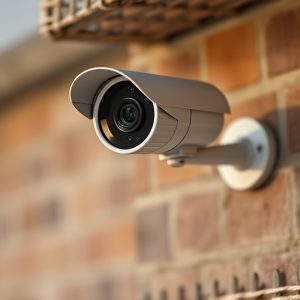Enhance Retail Security: Discreet Mock Cameras for Effective Surveillance
Mounting high-quality fake cameras on brick surfaces is a cost-effective way for retail stores to bo…….
Mounting high-quality fake cameras on brick surfaces is a cost-effective way for retail stores to boost security and gather customer insights. These mock cameras act as powerful deterrents against theft and vandalism, with strategic placement aiding in optimizing store layout and merchandising. By aligning camera placements with high-traffic areas, realistic visual impact, and leveraging wall features, retailers can achieve maximum believability. This subtle approach enhances security without drawing attention, providing peace of mind while discouraging criminal activity through a powerful surveillance presence. Crucial considerations include legal compliance, proper mounting techniques, and blending fake cameras with genuine gear for effective deterrence.
Retail stores are always seeking ways to enhance security without compromising customer experience. Mock security cameras, or disguised surveillance, offer a creative solution. This article explores the advantages of implementing fake cameras, focusing on brick walls as an effective mounting location. We’ll guide you through the process, from choosing realistic designs to legal considerations. By understanding the benefits and best practices for installing mounting fake cameras on brick, retailers can significantly boost their security measures without raising suspicion.
- Understanding the Benefits of Mock Security Cameras
- Choosing the Right Locations for Fake Cameras on Brick Walls
- Installation Techniques for Effective Disguised Surveillance
- Enhancing Retail Store Security with Realistic Visuals
- Legal Considerations and Best Practices for Using Mock Cameras
Understanding the Benefits of Mock Security Cameras
Mock security cameras, or fake cameras, offer a cost-effective and efficient solution for retail stores looking to enhance their security measures. One of the primary benefits is their ability to deter potential thieves and vandals through the mere presence of surveillance equipment, even if it’s not functional. By strategically mounting fake cameras on brick walls or other structures within the store, business owners can create a sense of increased vigilance without breaking the bank.
This method provides a tangible deterrent, as would-be criminals may be less likely to attempt any illegal activities in the presence of visible surveillance. Additionally, these mock cameras allow stores to gain valuable insights into customer behavior and traffic patterns through smart placement, helping to optimize layout and merchandising strategies. Mounting fake cameras on brick surfaces is a versatile and adaptable approach that can be tailored to fit various store designs, making them an attractive option for retailers seeking both security and strategic planning.
Choosing the Right Locations for Fake Cameras on Brick Walls
When considering where to mount fake security cameras on brick walls, it’s essential to understand the visual impact and believability you want to achieve. Retail stores should focus on high-traffic areas and strategic points that mimic genuine camera placement. For instance, mounting fake cameras near entrances, exits, or high merchandise display areas can create a sense of security and deter potential thieves. The key is to place them in locations that appear natural and logical, aligning with real surveillance setup practices.
The physical characteristics of the brick wall play a significant role in deciding where to attach these mock cameras. Look for ledges, protrusions, or any imperfections that can serve as mounting points. These areas will provide the best visual representation of a secure installation. Additionally, consider the lighting conditions; well-lit spots are ideal, as they enhance the realism of the fake cameras and make them more effective in deterring criminal activity.
Installation Techniques for Effective Disguised Surveillance
To effectively disguise security cameras in retail stores, proper installation techniques are crucial. One popular method involves mounting fake cameras on brick walls or structures. This technique leverages the natural blend between the camera’s design and the store’s architecture, making it harder for potential thieves to spot the surveillance equipment. The process typically includes securing a high-quality fake camera with screws or adhesive designed for outdoor use, ensuring it aligns seamlessly with the surrounding brick surface.
For optimal results, consider using weatherproof casing and regular cleaning to maintain the camera’s authentic appearance. Additionally, positioning the cameras at strategic angles can enhance their effectiveness without drawing unnecessary attention. This approach offers a subtle yet powerful surveillance solution, providing peace of mind for retailers while deterring criminal activity through the illusion of constant observation.
Enhancing Retail Store Security with Realistic Visuals
Mock security cameras, when designed with realistic visuals and strategically mounted, can significantly enhance retail store security. By simulating the presence of actual surveillance equipment, these fake cameras deter potential thieves and vandals, acting as a powerful psychological deterrent. The visual impact of carefully placed mock cameras on brick walls or other structures within the store can be formidable, encouraging honest behavior among patrons and employees alike.
This tactic is particularly effective in high-theft areas or along exterior perimeters where real cameras might be less visible. Realistic designs that mimic the look and feel of genuine security equipment, complete with intricate details and LED indicators, create an authentic appearance that reinforces the store’s commitment to security. Mounting fake cameras on brick surfaces adds another layer of protection by integrating them seamlessly into the store’s architecture, making it harder for intruders to identify weak points in the security system.
Legal Considerations and Best Practices for Using Mock Cameras
When considering the use of mock security cameras for retail stores, it’s crucial to navigate legal considerations and best practices to ensure compliance and effectiveness. While fake cameras can deter crime and enhance store security, their installation must adhere to local laws and regulations. One important aspect is the proper mounting of these devices, especially on brick facades. Improper placement or visible evidence of tampering could lead to privacy concerns and potential lawsuits.
Best practices dictate that mock cameras should be securely attached to prevent physical alterations. Mounting them at strategic points, such as corners or above entryways, can maximize their deterrent effect while maintaining aesthetic harmony with the building’s architecture. Additionally, ensuring these cameras blend realistically with genuine security equipment and regular surveillance signage is essential for legal protection. Retailers should consult local authorities and legal experts to understand specific regulations regarding camera placement and privacy rights, especially when using mounting techniques like those on brick surfaces.
Mock security cameras, strategically mounted on brick walls, offer a cost-effective and discreet way to enhance retail store security. By understanding the benefits, choosing the right locations, employing effective installation techniques, and navigating legal considerations, retailers can create an illusion of heightened surveillance that deters crime without breaking the bank. This realistic approach to security not only protects merchandise but also contributes to a safer shopping environment for customers and staff alike.


